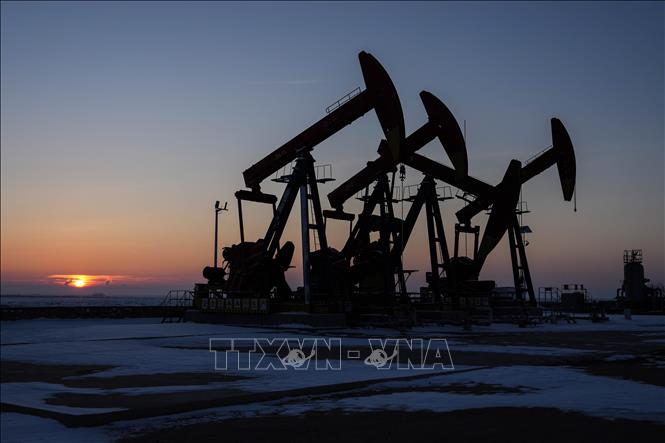
Historically, conflicts in the Middle East have been linked to global oil crises. When Israeli, British, and French forces invaded Egypt in 1956, blocking the Suez Canal, both London and Paris imposed fuel rationing. During the 1973 war, an Arab boycott more than doubled oil prices. Iran’s 1979 revolution also doubled global oil prices. Prices also briefly peaked during the Iraq-Kuwait war in 1990.
The current Gaza crisis initially appeared to be playing out similarly: oil prices spiked from around $70 a barrel to over $90 a barrel after the Israel-Hamas conflict broke out on October 7, 2023. However, less than two weeks later, US West Texas Intermediate (WTI) crude prices fell back below $74 a barrel, while Brent crude fell back below $80 a barrel.
In January 2024, oil prices spiked again after a U.S.-led strike on Houthi targets in Yemen in response to attacks on commercial ships in the Red Sea. Crude prices also fluctuated as Wall Street assessed the direction of interest rates, the dollar and geopolitical conflicts.
However, they are still far from the highest recorded in 2022. At the end of the most recent session on February 16, the price of US light sweet crude (WTI) for March 2024 delivery increased by 1.16 USD (1.5%) to 79.19 USD/barrel. Meanwhile, the price of North Sea Brent crude for April 2024 delivery increased by 61 USD (0.7%) to 83.47 USD/barrel.
One factor that could make it harder for oil prices to break out is weakening demand. The International Energy Agency (IEA)’s latest monthly report released on February 15 forecasts that global oil demand growth will slow from 2.3 million barrels per day in 2023 to 1.2 million barrels per day this year. The forecast is based on data that demand growth slowed from 2.8 million barrels per day in the third quarter of 2023 to 1.8 million barrels per day in the final quarter of last year.
In the report, the IEA assessed that oil demand growth is losing momentum as the post-pandemic energy demand expansion phase has largely ended.
But for some economies , that period of growth has been weak. China's economy was expected to rebound strongly in 2023 after a prolonged pandemic shutdown. Instead, a property market crisis, weak spending and high youth unemployment have brought the world's second-largest economy to a standstill. Some economists believe China could face decades of stagnation.
Other countries are also facing recessions. The UK has entered a recession after its gross domestic product (GDP) fell by 0.3% in the final quarter of 2023, following a 0.1% decline in the previous quarter. A recession is usually defined as two consecutive quarters of GDP decline, but can also be defined by other factors such as high unemployment.
Japan also unexpectedly fell into recession, after weak domestic consumption caused its GDP to shrink for two consecutive quarters. That was enough to make Japan lose its position as the world's third largest economy, falling behind Germany.
The US economy remains resilient thanks to the Federal Reserve’s aggressive rate hikes. However, some investors and economists warn that the world’s largest economy could fall into recession by the end of 2024 as Americans tighten their spending due to high interest rates and their post-pandemic savings.
While global oil demand growth is slowing, supply remains relatively strong, which is likely to put further downward pressure on oil prices.
The United States is estimated to have produced 13.3 million barrels of crude oil and condensate per day in the fourth quarter of 2023, more than any country in history.
In addition, several key OPEC and non-OPEC producers (OPEC+) produced more oil than the group’s production targets in January 2024. Iraq pumped an additional 230,000 barrels per day and the United Arab Emirates (UAE) pumped an additional 300,000 barrels per day last month, according to the IEA report.
The IEA report said that this year's surge in global oil supply, led by the United States, Brazil, Guyana and Canada, will overshadow the expected increase in world oil demand.
Global economic growth is expected to slow this year, despite the anticipated rate cuts, mainly due to the impact on business activity and consumer spending from a prolonged period of rate hikes in 2022 and 2023, according to the IEA.
Meanwhile, OPEC’s report released on February 13 predicted that global oil demand would increase by 2.25 million barrels per day in 2024 and 1.85 million barrels per day in 2025, unchanged from the forecast made last month. These are both levels considered high by market observers.
The divergence between the IEA and OPEC forecasts is a reminder of the inherent difficulties in trying to predict oil demand and prices in today’s complex markets. Both short-term forecasts and warnings about them can be wrong. So far, the Gaza crisis has done little to create any lasting price changes, despite widespread concerns about the opposite scenario.
Source



































































































Comment (0)